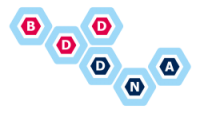Identify Key AI Algorithm Scenarios
Begin by identifying key scenarios that represent critical aspects of the AI algorithm’s behavior. Collaborate with stakeholders, data scientists, and domain experts to determine the essential functionality and outcomes the algorithm should achieve. These scenarios act as real-life examples that capture the expected behavior of the AI algorithm in different situations.
Define Behavior-Driven Scenarios for AI Algorithms
Formulate behavior-driven scenarios using a structured format, such as Given-When-Then, to describe the behavior of the AI algorithm. Each scenario should consist of three parts: the initial context or setup (Given), the action or input (When), and the expected outcome or behavior (Then). This format ensures clear and concise description of the algorithm’s behavior, making it easier to understand and validate the requirements.
Refine and Validate Scenarios
Refine the initially identified scenarios by breaking them down into smaller, more manageable parts. Collaborate with stakeholders, data scientists, and technical experts to validate and verify the scenarios against the algorithm’s intended functionality. Ensure that the scenarios are specific, measurable, achievable, relevant, and time-bound (SMART), allowing for precise implementation and evaluation.
Incorporate Acceptance Criteria
Define acceptance criteria for each scenario to provide objective measures for determining the successful implementation of the AI algorithm. Acceptance criteria specify the conditions or thresholds that need to be met for a scenario to be considered satisfactorily implemented. Collaborate with stakeholders to establish the desired performance, accuracy, and other relevant metrics that the algorithm should meet.
Develop Automated Tests for Scenario Validation
Leverage BDD frameworks and tools to automate the testing of AI algorithm scenarios. Write automated tests using frameworks such as Cucumber, SpecFlow, or Behave to execute the defined scenarios and validate the algorithm’s behavior. These tests ensure that the algorithm performs as expected, providing early detection of any deviations or issues. Automation enables consistent and efficient testing, allowing you to focus on refining the algorithm and improving its accuracy.
Iterate and Enhance the Algorithm
Embrace an iterative approach to continuously refine and enhance the AI algorithm based on feedback and evaluation. Collaborate with stakeholders, data scientists, and domain experts to incorporate their insights and adapt the algorithm to evolving requirements. Regularly review and update the scenarios and acceptance criteria to reflect any changes or advancements in the algorithm’s functionality.
Conclusion
By applying Behavior-Driven Development to the creation and description of AI algorithms, you can effectively refine requirements, ensure alignment with stakeholder expectations, and drive the development of accurate and reliable AI solutions. The step-by-step approach of identifying scenarios, formulating behavior-driven descriptions, refining and validating scenarios, incorporating acceptance criteria, and automating scenario testing will help streamline the development process and deliver AI algorithms that meet or exceed desired behavior.


